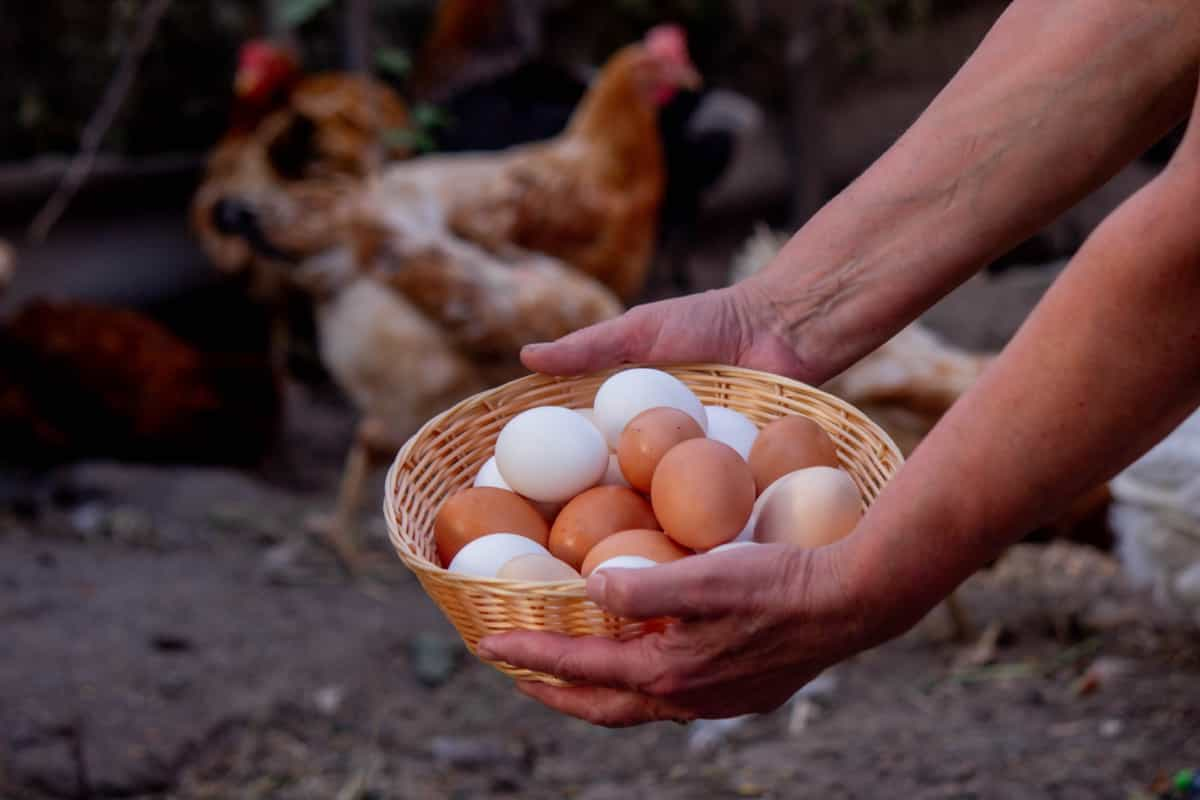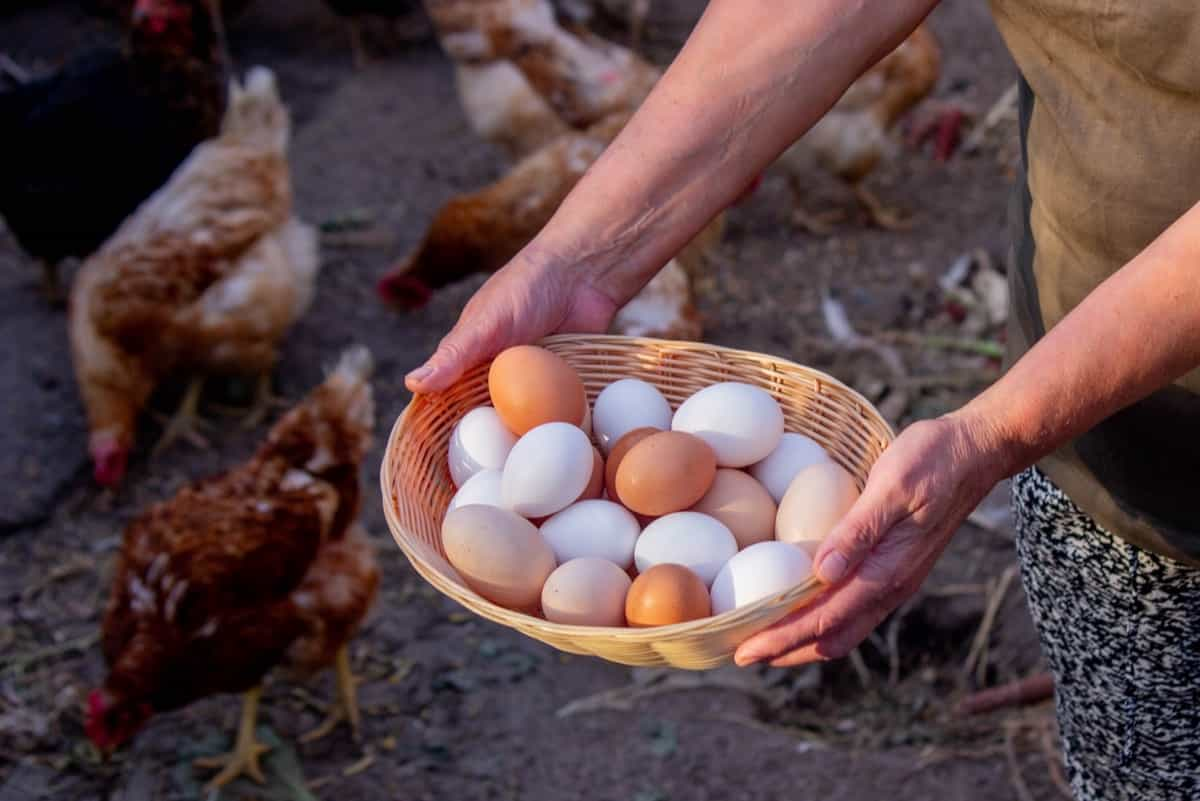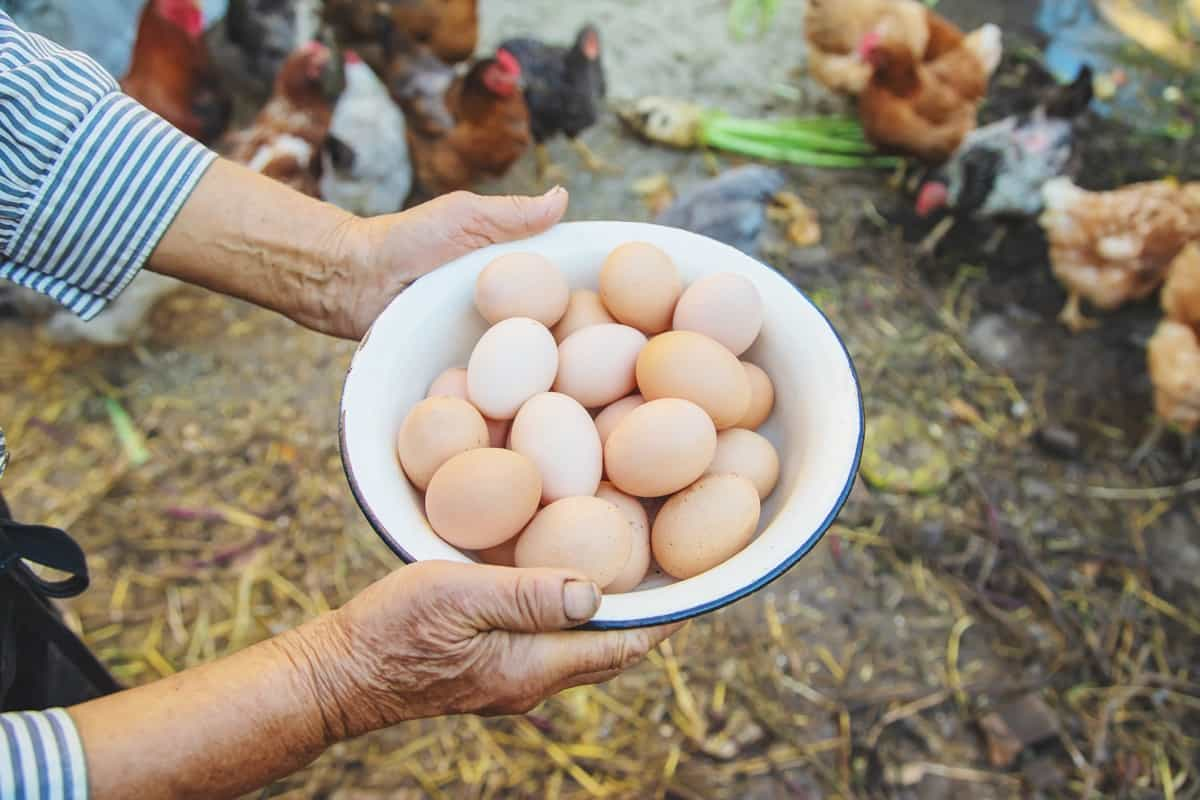Create a well-thought-out business strategy to discover the possibilities of raising free-range chickens. A thorough approach is essential to success in everything from pasture management to market analysis. Check out our guide, which is geared for those who want to start their own chicken business.

It covers important topics, including breed selection, housing design, and marketing strategies. Whether you’re starting a new company or growing an already established one, this well-crafted business plan will help you achieve success and expansion in the booming free-range chicken farming sector.
Free-Range Chicken Farming Business Plan
Executive Summary
This is a summary of your company’s concept, objectives, and vision. It should draw prospective partners’ or investors’ attention to the key ideas in your company plan. Few things you need to include in this section:
- Your company’s name, address, and organizational setup
- Your value proposition and mission statement
- Your competitive edge and target market
- Your offerings, such as meat, eggs, and so on.
- Your financial forecasts and sources of income
- Your executive group and essential employees
Market Analysis
When you do market research and analysis for your free-range chicken farming enterprise, it is important to ascertain your target market’s requirements, preferences, purchasing patterns, and readiness to pay for your goods. It’s advisable to research your rivals’ advantages and disadvantages, market share, and pricing policies. A few of the following tools for this section:
- SWOT analysis: This method assists you in determining your market-related advantages, disadvantages, opportunities, and threats.
- PEST analysis: This aids in evaluating the potential effects of political, economic, social, and technical issues on your company.
- Porter’s Five Forces Analysis: This aids in assessing the degree of profitability and rivalry in your sector.
Marketing Plan
A marketing plan describes your strategy for reaching your target market via product promotions and sales. Your marketing goals, plans, techniques, and budget should all be well-defined. Additionally, it would help if you outlined your plan for evaluating the success of your marketing initiatives.
The four Ps of marketing are pricing, product, location (place), and promotion. This is referred to as the marketing mix. It would help if you outlined how you would establish your pricing, distribute your items, set them apart from those of your rivals, and tell clients about the value you provide.
- Marketing channels: These are the means by which you will advertise to consumers; examples include social media, email marketing, internet platforms, flyers, and so on.
- Marketing metrics: These are the performance indicators, including sales volume, customer satisfaction, conversion rate, etc., that you will use to assess how well your marketing is working.
In case you missed it: Pasture-Based Free-Range Chicken Farming: How to Implement for Improving Welfare and Quality

Operational Plan
Your free-range chicken farming business’s operating strategy should include your approach to product production, processing, and sales. The following parts need to be included in it:
Production: This part should include information on how many hens you plan to raise, the breeds you will use, the feed and supplements you will use, the methods you will employ to ensure the health and well-being of your flock, and the facilities and equipment you will need.
Processing: This section should include instructions on how to decapitate, peel, package, and store your chickens. It should also include details about expenses and income, quality control procedures, and legal and hygienic standards.
Marketing and sales: In this area, you should outline your strategy for product distribution and promotion. It must include details on the target market, the price plan, the routes of distribution, the advertising techniques, and the customer support.
Financial Plan
You should include a realistic prediction of your revenue and costs for the next three to five years in the financial plan that you have developed for your free-range chicken farming company. It is recommended that the following papers be included:
- This record, called an income statement, should indicate your revenues, costs, and profits or losses for each year.
- This document, known as the cash flow statement, should detail your cash inflows and expenditures for each year.
- The balance sheet is a document that should be used to demonstrate your assets, liabilities, and equity for each accounting period.
- This document should demonstrate the point at which your revenues are equal to your costs. This is known as a break-even analysis.
A sensitivity analysis: This document should demonstrate how your findings might shift in the event that some of the most important variables or assumptions were altered.
Appendix
The appendix of your free-range chicken farming business plan should include any additional information that supports your main arguments or claims. It may include the following items:
- Market research data
- Customer testimonials
- Product samples or photos
- Legal documents or permits
- Resumes of key personnel
- Financial statements or projections of other businesses
A Sample Free-Range Chicken Farm Business Plan: What Needs to be Covered
For a company to be successful in the highly competitive poultry sector, it is necessary to carefully plan and carry out the process of starting a free-range chicken farming operation. This all-encompassing guide will provide an overview of the most important procedures and factors to take into account while developing a viable business plan that is adapted to the Indian market.
Industry Overview
An overview of the industry Free-range chicken farming in India entails allowing hens to walk outside for a large portion of the day. This encourages natural behavior and improves the quality of the birds’ products. In contrast to traditional poultry farming, free-range poultry farming emphasizes access to the outdoors, which results in healthier birds and better-quality meat and eggs.
Understanding Free-Range Chicken Farming
Gaining an Understanding of Free-Range Chicken Farming: Investigate the idea of free-range chicken farming, focusing on the advantages of providing hens with access to the outdoors and the subsequent enhancements in the quality of both the meat and the eggs produced. Emphasize the significance of sustainable and ethical agricultural techniques in order to satisfy the desire of consumers for food that is produced ethically and is healthier.
In case you missed it: Brighten Your Flock: Raising Easter Egger Chickens for Beauty and Bounty

Market Analysis
The objective of this market research was to conduct a comprehensive study of the Indian poultry industry, with a particular emphasis on trends, demand drivers, and consumer preferences. Indicating a positive market climate for free-range chicken farming, it is important to highlight the growing demand for poultry products that are supplied ethically and are environmentally friendly.
SWOT Analysis
A SWOT analysis is necessary to evaluate the possibilities, threats, strengths, and weaknesses involved with beginning a free-range chicken farming company in India. Identifying many aspects, including customer demand, regulatory concerns, and competition, is also necessary to establish successful strategies for a firm’s development.
Business Structure
Outline the organizational structure of the free-range chicken farming company, including the essential roles and tasks that are involved in the firm. It is essential to have a conversation about the significance of employing skilled staff and putting into practice effective management techniques in order to guarantee both operational excellence and long-term sustainability.
Products and Services
Describe the many products and services that the free-range chicken farm provides, such as live birds, processed meat, and eggs. To separate the company from its rivals and to attract customers who are picky about their purchases, it is important to emphasize the dedication to ethical agricultural techniques and high-quality farming.
Sales and Marketing Strategy
Create a complete sales and marketing plan to promote the free-range chicken farm and attract clients. This strategy should be followed to achieve the desired results. Use a different of marketing channels, including advertising, social media, and direct sales, in addition to conventional marketing channels, to communicate successfully with your target consumers.
Pricing plan
Formulating and implementing a competitive pricing plan based on market research and manufacturing costs is important to optimize profitability while maintaining attractiveness to clients. When determining the pricing of chicken goods, various elements, including the cost of labor, the cost of feed, and the market demand, must be taken into account.
Startup Expenditure (Budget)
Estimate the initial costs of establishing the free-range chicken farming company. These costs will include the purchase of equipment, the acquisition of land, and the expenditures associated with running the firm for the first few months. Develop a comprehensive budget plan to manage resources properly and reduce the likelihood of financial problems.
In case you missed it: How to Optimize Your Poultry Egg Farm Business Plan with These Strategies

Best Free-Range Chicken Farming Breeds
Chickens are raised free-range to scavenge for food in nature. This may increase chicken health, welfare, and egg quality and provide reduced feed costs, greater earnings, and environmental sustainability for farmers. Some chicken breeds are more susceptible to predators, illnesses, and severe weather, making them unsuitable for free-range farming. Thus, breeds with these traits are essential:
Wary and alert: These breeds can sense danger and escape from predators quickly. They are also active and curious, which helps them explore and find food sources. Some examples of wary breeds are Leghorn, Lakenvelder, Egyptian Fayoumi, Hamburg, and Old English Game.
Inconspicuous plumage: These breeds have feathers that blend in with their surroundings and make them less visible to predators. They usually have dark or patterned colors, such as black, red, barred, or speckled. Some examples of inconspicuous breeds are Cornish hybrids, Rhode Island Red, Speckled Sussex, Welsummer, and Barnevelder.
Acute vision: These breeds have clear eyesight and can spot predators or food from a distance. They also have fewer or no head feathers that may obstruct their vision. Some examples of acute vision breeds are Ancona, Andalusian, Araucana, Australorp, and Minorca.
Foraging ability: These breeds have strong instincts and skills to find and eat a variety of foods in the wild. They can adapt to different terrains and climates and consume insects, plants, seeds, worms, and other natural foods. Some examples of foraging breeds are Ameraucana, Delaware, Dominique, Java, and Plymouth Rock.
Setup Costs for Free-Range Chicken Farming
- Housing: A suitable coop or shed that provides shelter, ventilation, nesting boxes, roosts, feeders, and waterers is essential. Depending on the materials and design, costs range from $500 to $2,000.
- Fencing: Sturdy fencing enclosing the free-range area, at least 4 feet high, with wire mesh or electric wire on top to deter predators. Costs vary based on size and type, ranging from $200 to $1,000.
Equipment
- Feed storage bins.
- Egg collection baskets.
- Egg washing machines.
- Egg grading machines.
- Thermometers.
- First aid kits.
- Costs range $300 to $1,500, depending on quality and quantity.
- Supplies: Essential supplies include feed, water, bedding, grit, oyster shells, vitamins, vaccines, dewormers, disinfectants, and pest control products. Monthly costs vary from $400 to $2,000, depending on type and quantity.
- Land: Land suitable for grazing and crop growth, with access to water and electricity sources, is required. Land leasing or purchasing costs range from $100 to $500 per acre per year.
- Labor: Tasks include feeding, watering, egg collection, grading, packing, marketing, cleaning, maintenance, and compliance. Labor costs range from $10 to $20 per hour per worker.
- Total Setup Costs: For a farm with 100 laying hens, total setup costs range from $1,500 to $7,000, with monthly operating costs of $400 to $2,000.
- Revenue and Profit: Conservative estimates suggest revenue of $0.50 per egg or $1,500 per month. The break-even point may be reached within 1 to 5 months, with a profit margin of 25% to 75%.
In case you missed it: How to Raise Welsummer Chickens: A Comprehensive Guide for Beginners

Tips for Crafting a Comprehensive Free-Range Chicken Farming Business Plan
To guarantee the efficacy and profitability of a free-range chicken farming business plan, a number of crucial actions must be taken in its creation. In light of the discussion above, the tips that follow may be used to draft such a plan:
Start by providing a brief executive summary that highlights the key elements of the farm, such as its location, goods, target market, competitive advantage, financial forecasts, and objectives. Do a complete market study to comprehend market trends, consumer preferences, rivals, opportunities, and legal requirements. Describe the farm’s goals and objectives, with a focus on animal care, sustainability, and high-quality produce. Using the SMART criteria, set attainable goals that address production, sales, and profitability.
Determine the required amount of land, machinery, supplies, labor, and marketing costs to allocate resources effectively. Then, create a detailed budget. To draw in and keep consumers, create a strong marketing and sales plan that emphasizes social media, branding, advertising, and distribution networks. Explain the operating strategy in detail, taking into account the logistics of distribution, health care, and everyday farm operations.
Develop mitigation techniques for anticipated risks, such as market fluctuations, disease outbreaks, and regulatory changes. Set up your own key performance indicators (KPIs) to track success and advancement. Review and tweak the strategy as necessary on a regular basis. Summarize the strategy’s main ideas and highlight its potential for success and value to stakeholders before closing.
In case you missed it: Ultimate Guide to Raising Australorp Chickens: Profile, Farming Economics, Egg Production, Diet, and Care

Conclusion
Crafting a comprehensive free-range chicken farming business plan requires careful consideration of market analysis, resource allocation, marketing strategies, operational plans, and risk management. With clear objectives, efficient resource utilization, and continuous monitoring, the plan can pave the way for a successful and sustainable chicken farming venture.
- Types of Pesticides Used in Agriculture: A Beginner’s Guide
- Economical Aquaculture: A Guide to Low-Budget Fish Farming
- 15 Common Planting Errors That Can Doom Your Fruit Trees
- How to Make Houseplants Bushy: Effective Tips and Ideas
- Innovative Strategies for Boosting Coconut Pollination and Yield
- Pollination Strategies for Maximum Pumpkin Yield
- The Complete Guide to Chicken Fattening: Strategies for Maximum Growth
- Natural Solutions for Tulip Problems: 100% Effective Remedies for Leaf and Bulb-Related Issues
- Revolutionizing Citrus Preservation: Towards a Healthier, Greener Future
- Natural Solutions for Peony Leaf and Flower Problems: 100% Effective Remedies
- Maximizing Profits with Avocado Contract Farming in India: A Comprehensive Guide
- Natural Solutions for Hydrangea Problems: 100% Effective Remedies for Leaf and Flowers
- The Ultimate Guide to Choosing the Perfect Foliage Friend: Bringing Life Indoors
- From Sunlight to Sustainability: 15 Ways to Use Solar Technology in Agriculture
- The Ultimate Guide to Dong Tao Chicken: Exploring from History to Raising
- The Eco-Friendly Makeover: How to Convert Your Unused Swimming Pool into a Fish Pond
- Mastering the Art of Delaware Chicken Farming: Essentials for Healthy Backyard Flocks
- 20 Best Homemade Fertilizers for Money Plant: DIY Recipes and Application Methods
- How to Craft a Comprehensive Free-Range Chicken Farming Business Plan
- Brighten Your Flock: Raising Easter Egger Chickens for Beauty and Bounty
- How to Optimize Your Poultry Egg Farm Business Plan with These Strategies
- Subsidy for Spirulina Cultivation: How Indian Government Schemes Encouraging Spirulina Farmers
- Ultimate Guide to Raising Dominique Chickens: Breeding, Feeding, Egg-Production, and Care
- Mastering the Art of Raising Jersey Giant Chickens: Care, Feeding, and More
- Ultimate Guide to Raising Legbar Chickens: Breeding, Farming Practices, Diet, Egg-Production
- How to Raise Welsummer Chickens: A Comprehensive Guide for Beginners
- How to Protect Indoor Plants in Winter: A Comprehensive Guide
- Ultimate Guide to Grow Bag Gardening: Tips, Tricks, and Planting Ideas for Urban Gardeners
- Guide to Lotus Cultivation: How to Propagate, Plant, Grow, Care, Cost, and Profit
- Agriculture Drone Subsidy Scheme: Government Kisan Subsidy, License, and How to Apply Online
- Ultimate Guide to Raising Araucana Chickens: Breed Profile, Farming Economics, Diet, and Care
- Bringing Hydroponics to Classroom: Importance, Benefits of Learning for School Students
- Ultimate Guide to Raising Polish Chickens: Breed Profile, Farming Economics, Diet, and Care
- Ultimate Guide to Raising Australorp Chickens: Profile, Farming Economics, Egg Production, Diet, and Care
- Silkie Chicken Farming: Raising Practices, Varieties, Egg Production, Diet, and Care
- Sussex Chicken Farming: Raising Practices, Varieties, Egg Production, Diet and Care